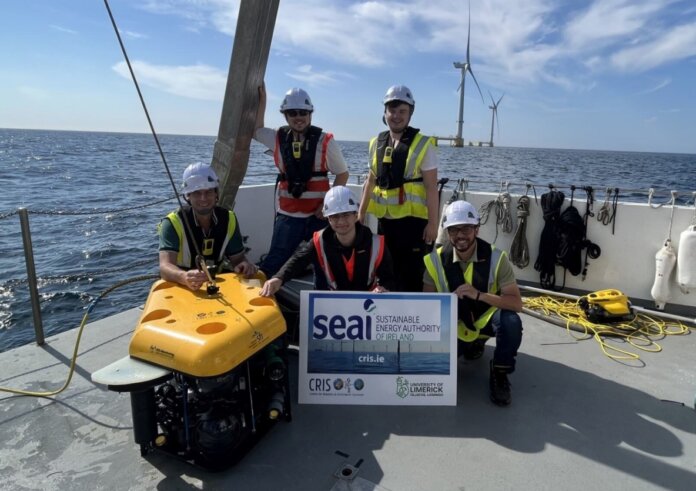Researchers at the Centre for Robotics and Intelligent Systems (CRIS) at University of Limerick (UL) have discovered a robotic solution for inspecting floating offshore wind farms after developing a remote-operated vehicle to test the technology at WindFloat Atlantic.
The team used a fleet of field robots, subsea remotely operated vehicles and unmanned aerial vehicles to survey the Ocean Winds’ project site off the coast of Portugal.
The survey yielded high-resolution, geo-referenced 3D models of structures above and below the waterline. The datasets and findings will be accessible through gold open-access articles and proceedings.
“The significance of our research should be viewed in the context of Ireland’s existing offshore wind strategy, which aims to achieve 37 GW of offshore renewable energy capacity by 2050,” says Professor Daniel Toal, co-director of UL CRIS.
“This target also includes 6 GW of floating offshore wind farms on the West Coast and plans for the Shannon Estuary. Achieving this goal requires the development of intervention, repair and maintenance capacities and capabilities to ensure offshore operations are efficient and cost-effective.”
The testing was conducted as part of the ATLANTIS project call for testing marine technology solutions for inspecting offshore wind structures and was funded by the Sustainable Energy Authority of Ireland Robots for Wind Farm project. Ocean Winds and MaREI, a Science Federation Ireland Centre for Energy Climate, Marine Research and Innovation, also supported the survey.




